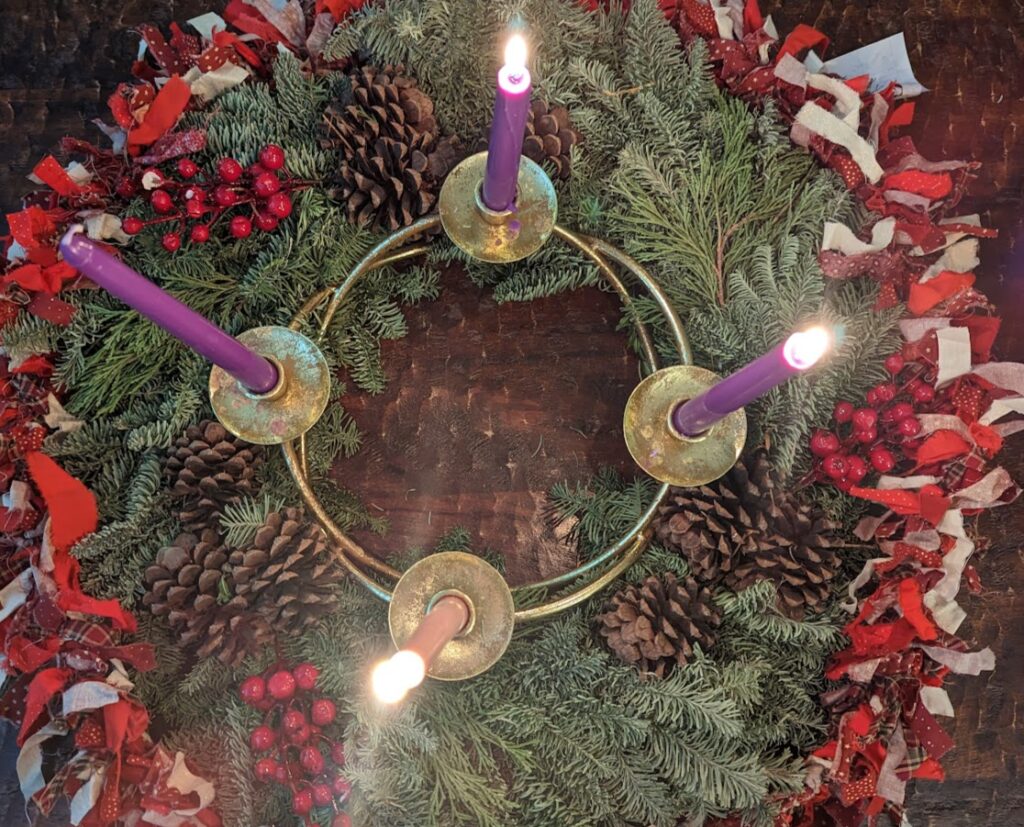by His wounds
I didn’t pick a word of the year for 2023. I can’t really call it a tradition yet, just something I did two years in a row at the behest of a friend. And while I scoffed at the idea originally, it was meaningful in the end. So I really did try to think of one for this year, but nothing stuck. Yet as Lent draws to a close, I think I’ve found it, the word of the year: wounds.
One of the reasons I was opposed to the idea of a word-of-the-year is that it seemed like a goal-setting mechanism, and that’s really not my style. Goals are anxiety-inducing, just threats of failure looming in the distance. I tend to do better with a day-by-day go of things, so I can go to sleep taking note of little victories and examining little failures. But the word-of-the-year is more like a sacramental, a mode through which Christ speaks to me. The year my seventh baby was born, the word was healing, and that year would reveal a path of healing I couldn’t have anticipated. The next year it was receptivity, and soon I was listening to the heartbreaks of my children, which set us on a road of discernment to relocating, something I couldn’t have imagined. And this year wounds have been the mode through which I’m learning to know myself, and this Lent, a mode through which Christ is revealing Himself.
Listening to Him through wounds has been very challenging. For a while, all I could hear was self-loathing, neglect, and despair. It cast a shadow over everything in my life. At times I thought I could retreat again, push it all back into the shadows and manage like I have for the past many years, but once a leviathan like that has been unleashed, it’s out. It will have its reckoning. All I could do was surrender to the time it would take to process and heal. In the meantime, facing the ugly and walking around with open wounds has been exhausting.
My reckoning with God has taken time, but has left me with significant moments of revelation. It was during the 33 days of consecration to Jesus through Mary that I first realized how distorted my view of Father-God was. It was at the confession-of-my-life where the priest opened that pandora’s box for good and allowed me room to express anger at God. He explained suffering to me in a way that I could understand, and inserted Christ as a light of hope into my darker memories. On my way to daily Mass a year ago, I suddenly was given an image of the Trinity with the words, “Everything I [Christ] am, God is. He has given me everything”. And just in the short time I’ve been in counseling, I feel like I’ve been able to organize feelings into right places, redirecting the anger I had towards God.
What has become increasingly clear over Lent is how well God knows me. That probably sounds silly– of course He does as my Creator. But I think there’s always been a self-protective front between myself and Him. There were parts I hid from Him, not completely on purpose. But He always knew what was there in the deep and waited for the right moment in my life to face those dark depths with me. And He hasn’t left my side.
At times Mass has been difficult, sometimes impossible to sit through. But a source of strength is the wounded, crucified, naked Christ on the cross lifted up for all to see. He leads the way in vulnerability, exposure, and suffering. This is what turned the heart of the thief on the cross. The thief shows us how to approach Good Friday: “He sees a Cross and adores a Throne; he sees a condemned Man, and invokes a King”*. Sometimes we want to turn this around and believe that Christ’s divinity made suffering beautiful, and Christ’s salvific work made the cross easy and light. But suffering is still terrible, the cross is still the way of death. But we’re no longer alone; our pain is seen and experienced by the Creator of the cosmos. We are on a cross beside Him, tempted to curse the day we were born, but strengthened by His fortitude in suffering and the look of love in His eyes as He suffers alongside us.
If I can know myself better through my wounds, and I can know Christ better through His wounds, then I have to believe that the only way to understand others better is through their wounds. It’s hard to watch others suffer, and I think sometimes out of our discomfort we try to fix it, fill the void with platitudes, and sometimes pretend it doesn’t exist. But here lies one of the beautiful mysteries about not just Good Friday, but Christ’s entire mission on earth: he dresses the wounds of others—both physical and spiritual—and is wounded Himself for all to see. There is no hurt unknown to Him, no wound too terrible to mend, no cry of the heart that escapes Him. It’s not simple, nor is it easy. It’s tiring and exhausting, requires a heroic amount of courage and patience. But He is all of that on the cross for us, showing us the way, ever before us.
*From The Seven Last Words, Fulton J. Sheen

